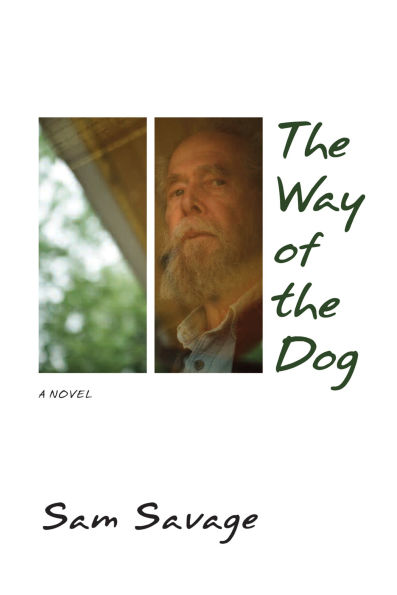"Sam Savage [creates] some of the most original, unforgettable characters in contemporary fiction. . . . Readers are left with a voice so strong that Savage is able to derive significance from these events by sheer literary force."--Kevin Larimer, Poets&Writers
"Savage's skill is in creating complex first-person characters using nothing but their own voice."--Carolyn Kellogg, Los Angeles Times
"[Savage] creates one of the most intriguing stories--and one of the most vivid characters--that this reader has encountered this year."--The Writer
Sam Savage's most intimate, tender novel yet follows Harold Nivenson, a decrepit, aging man who was once a painter and arts patron. The death of Peter Meinenger, his friend turned romantic and intellectual rival, prompts him to ruminate on his own career as a minor artist and collector and make sense of a lifetime of gnawing doubt.
Over time, his bitterness toward his family, his gentrifying neighborhood, and the decline of intelligent artistic discourse gives way to a kind of peace within himself, as he emerges from the shadow of the past and finds a reason to live, every day, in "the now."
Sam Savage is the best-selling author of Firmin: Adventures of a Metropolitan Lowlife, The Cry of the Sloth, and Glass. A native of South Carolina, Savage holds a PhD in philosophy from Yale University. He resides in Madison, Wisconsin.
1108166792
"Savage's skill is in creating complex first-person characters using nothing but their own voice."--Carolyn Kellogg, Los Angeles Times
"[Savage] creates one of the most intriguing stories--and one of the most vivid characters--that this reader has encountered this year."--The Writer
Sam Savage's most intimate, tender novel yet follows Harold Nivenson, a decrepit, aging man who was once a painter and arts patron. The death of Peter Meinenger, his friend turned romantic and intellectual rival, prompts him to ruminate on his own career as a minor artist and collector and make sense of a lifetime of gnawing doubt.
Over time, his bitterness toward his family, his gentrifying neighborhood, and the decline of intelligent artistic discourse gives way to a kind of peace within himself, as he emerges from the shadow of the past and finds a reason to live, every day, in "the now."
Sam Savage is the best-selling author of Firmin: Adventures of a Metropolitan Lowlife, The Cry of the Sloth, and Glass. A native of South Carolina, Savage holds a PhD in philosophy from Yale University. He resides in Madison, Wisconsin.
The Way of the Dog
"Sam Savage [creates] some of the most original, unforgettable characters in contemporary fiction. . . . Readers are left with a voice so strong that Savage is able to derive significance from these events by sheer literary force."--Kevin Larimer, Poets&Writers
"Savage's skill is in creating complex first-person characters using nothing but their own voice."--Carolyn Kellogg, Los Angeles Times
"[Savage] creates one of the most intriguing stories--and one of the most vivid characters--that this reader has encountered this year."--The Writer
Sam Savage's most intimate, tender novel yet follows Harold Nivenson, a decrepit, aging man who was once a painter and arts patron. The death of Peter Meinenger, his friend turned romantic and intellectual rival, prompts him to ruminate on his own career as a minor artist and collector and make sense of a lifetime of gnawing doubt.
Over time, his bitterness toward his family, his gentrifying neighborhood, and the decline of intelligent artistic discourse gives way to a kind of peace within himself, as he emerges from the shadow of the past and finds a reason to live, every day, in "the now."
Sam Savage is the best-selling author of Firmin: Adventures of a Metropolitan Lowlife, The Cry of the Sloth, and Glass. A native of South Carolina, Savage holds a PhD in philosophy from Yale University. He resides in Madison, Wisconsin.
"Savage's skill is in creating complex first-person characters using nothing but their own voice."--Carolyn Kellogg, Los Angeles Times
"[Savage] creates one of the most intriguing stories--and one of the most vivid characters--that this reader has encountered this year."--The Writer
Sam Savage's most intimate, tender novel yet follows Harold Nivenson, a decrepit, aging man who was once a painter and arts patron. The death of Peter Meinenger, his friend turned romantic and intellectual rival, prompts him to ruminate on his own career as a minor artist and collector and make sense of a lifetime of gnawing doubt.
Over time, his bitterness toward his family, his gentrifying neighborhood, and the decline of intelligent artistic discourse gives way to a kind of peace within himself, as he emerges from the shadow of the past and finds a reason to live, every day, in "the now."
Sam Savage is the best-selling author of Firmin: Adventures of a Metropolitan Lowlife, The Cry of the Sloth, and Glass. A native of South Carolina, Savage holds a PhD in philosophy from Yale University. He resides in Madison, Wisconsin.
11.49
In Stock
5
1

The Way of the Dog
152
The Way of the Dog
152eBook
$11.49
$14.95
Save 23%
Current price is $11.49, Original price is $14.95. You Save 23%.
Related collections and offers
11.49
In Stock

Product Details
| ISBN-13: | 9781566893183 |
|---|---|
| Publisher: | Coffee House Press |
| Publication date: | 12/18/2012 |
| Sold by: | Barnes & Noble |
| Format: | eBook |
| Pages: | 152 |
| File size: | 2 MB |
About the Author

What People are Saying About This
From the B&N Reads Blog
